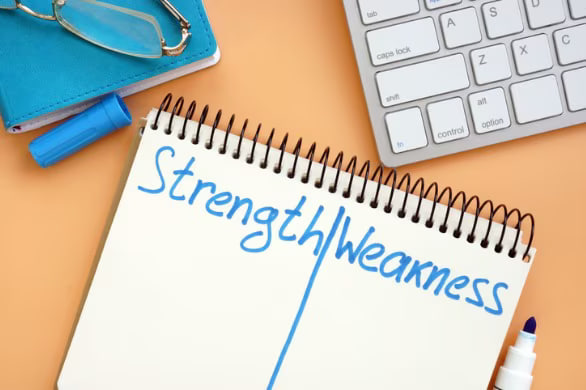In today’s fast-paced and ever-changing business environment, leaders must be equipped with the skills to navigate complex challenges, build inclusive teams, and achieve high performance. Leadership is a critical skill for success in any field. However, there is no one-size-fits-all approach to leadership.
Each leader’s unique style is shaped by their experiences, values, and personality. Developing your personal leadership style is a process that requires self-awareness, reflection, and a willingness to learn and grow.
Many famous leaders have developed a personal leadership style that sets them apart from others in their field. Steve Jobs, co-founder and former CEO of Apple, was known for his demanding and perfectionist leadership style. He was a visionary who pushed his employees to create products that combined innovation with elegance. Jobs’ leadership style wasn’t always easy to deal with, but his style created some of the most successful products in the technology industry.
Developing Your Personal Leadership Style Using Situational Leadership Techniques
Situational leadership requires adapting your leadership style to the current situation. This approach is based on the idea that there is no one-size-fits-all approach to leadership and that leaders must be flexible and adaptable to the needs of their team members.
Steps to Developing Your Personal Leadership Style
Developing an effective personal leadership style requires leaders to understand themselves, their team, and the organization. Here are some steps to developing an effective leadership style:
1. Seek Feedback
Feedback is essential for the growth and development of leadership skills. Seek feedback from your team members, peers, and mentors to better understand your strengths and weaknesses.
2. Learn from Failure
Failure is an inevitable part of leadership. Instead of dwelling on your mistakes, view them as opportunities to learn and grow. Identify mistakes that have been made so that you can avoid them in the future.
3. Adapt
The best leaders are able to adapt and change when circumstances change. Be willing to try new approaches and adjust your leadership style as needed.
4. Build Strong Relationships
A leader must build strong relationships with their team members and stakeholders. Get to know your team members and show them that you value their contributions.
5. Good communication
Good communication is a critical factor for a successful leader. Develop your communication skills by practicing active listening, giving and receiving feedback, and delivering clear and concise messages.
6. Be a role model
A leader shapes the behavior of his or her team. Be a role model by modeling the behaviors and values you want to see in your team members.
7. Continue to learn and grow
Leadership is a journey, not a destination. Continue to learn and grow by attending training sessions, reading books and articles on leadership, and taking on new experiences.
8. Understand your team's needs
Every team has unique needs. Get to know your team members and what motivates them. This will help you discover the best leadership style for your team.
9. Consider organizational culture
Your organization’s culture can also influence your leadership style. Think about your organization’s values, norms, and expectations and how they align with your leadership style.
10. Authenticity
While it’s important to be flexible and adapt to your team’s needs, it’s also important to have your leadership style. Honesty and sticking to your values helps you build trust and credibility with your team.
4 Leadership Styles
The first step in developing a personal leadership style is to understand the four leadership styles in the Situational Leadership Model. These styles are directive, coaching, supportive, and delegating. Each style is appropriate for a specific team member competence and commitment level.

1. Directive Leadership Style
- The leader provides specific instructions and closely supervises team members.
- It is beneficial for new team members who are low in competence and commitment.
2. Coaching Leadership Style
- The leader provides guidance and feedback to help team members develop skills.
- It is beneficial for team members who are moderately competent but low in commitment.
3. Supportive Leadership Style
- The leader provides support and encourages team members to take responsibility.
- It is beneficial for team members who are moderately to highly competent but have variable commitment.
4. Delegative Leadership Style
- The leader provides minimal direction and trusts team members’ decision-making ability.
- It is beneficial for team members who are high in competence and commitment.
Assessing Levels of Competence and Commitment
Once you understand the four leadership styles, the next step is to assess your team members’ competence and commitment levels. This helps you determine the most appropriate way to deal with each team member. The level of competence refers to the team member’s ability to perform a task, while the level of commitment refers to their motivation and confidence in performing the task.
After assessing these levels, you can determine each team member's most appropriate leadership style. For example, if you have a new team member who has not yet mastered a certain task, you should approach them with a directive leadership style, providing clear instructions and closely supervising their work. On the other hand, if you have a team member who is highly skilled but lacks motivation, you should use a supportive leadership style, providing encouragement and support to help them regain their confidence and commitment.
Self-Directed Virtual Leadership Training
With the rise of remote work and globally distributed teams, leaders must also learn how to lead and inspire virtually while maintaining team performance and cohesion. This is where self-directed virtual leadership training comes in.
Virtual leadership training provides contemporary, accessible, and relevant learning experiences that reflect today’s leaders' challenges. It helps leaders develop the skills needed to build inclusive, high-performing, and happy teams. Companies of all sizes rely on virtual leadership training to develop their leaders.
Tips for Developing Your Personal Leadership Style
1. Assess Your Strengths and Weaknesses
The first step in developing your leadership style is to assess your strengths and weaknesses. This assessment requires self-awareness and an honest assessment of your skills, knowledge, and abilities. You can use a variety of tools, such as personality tests, comprehensive feedback, and self-reflection exercises, to identify your strengths and weaknesses.
Once you have identified your strengths and weaknesses, you can use this information to develop a leadership style that leverages your strengths and addresses your shortcomings. For example, suppose you are good at communicating but need help with certain tasks. In this case, you could develop a leadership style that focuses on communication and collaboration while delegating some tasks to others.

2. Identify your values and beliefs
Your values and beliefs play an important role in shaping your leadership style. They govern your decisions and the way you communicate and interact with others. To develop your personal leadership style, you need to identify your values and beliefs and align them with your leadership goals.
For example, if you value openness and collaboration in your personal life, you might align these values with your leadership goals by practicing open communication and team-building activities in your work environment. This can help create a culture of trust and collaboration among your team members.
One way to identify your values and beliefs is to reflect on your past experiences and the lessons you have learned. You can also ask for feedback from others to see how others view your values and beliefs. Once you have identified your values and beliefs, you can use them to guide your decision-making and communication as a leader.
3. Learn from other leaders
No one becomes a successful leader all of a sudden. To develop your leadership style, you must learn from other leaders who have come before you. This learning requires a willingness to seek out mentors, read books and articles on leadership, and attend leadership development programs.
When learning from other leaders, you must be willing to try new things. You don’t have to adopt every aspect of a leader’s style, but you can learn from their successes and failures and apply those lessons to your leadership style.
4. Keep practicing
Developing your personal leadership style is an ongoing process that requires practice and building your skills and abilities over time. Leadership requires a commitment to continuous learning and improvement.
In Conclusion
You can build your leadership skills by seeking out leadership opportunities, such as volunteering for tasks at your workplace or joining the boards of nonprofits near you.
You can also lead a project, such as organizing a company picnic or planning a launch event for the organization you volunteered for. Try different approaches while keeping your team’s needs in mind; you will develop your leadership style over time.






